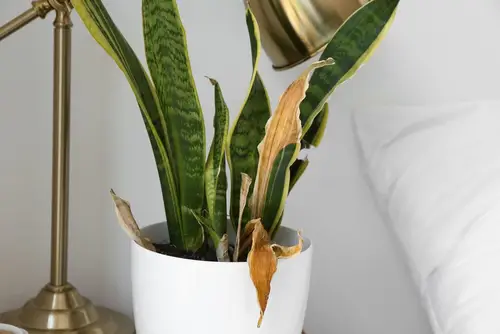Snake plants are popular houseplants known for their hardiness and ability to thrive in a variety of conditions. However, even these low-maintenance plants can experience issues, such as curling or drooping leaves. These symptoms can be caused by a variety of factors, including environmental conditions, pests, and disease.
Understanding the causes of snake plant leaves curling and drooping is essential to maintaining a healthy plant. Overwatering, underwatering, poor soil conditions, and inadequate light can all contribute to these symptoms.
Additionally, pests like thrips and spider mites can damage the leaves and cause curling or drooping. It is important to identify the underlying cause in order to take appropriate action and prevent further damage to the plant.
If left untreated, curling and drooping leaves can be a sign of an unhealthy snake plant. Signs of an unhealthy plant can include stunted growth, yellowing leaves, and root rot.
By taking proactive measures to prevent these symptoms and addressing them promptly when they do occur, snake plant owners can ensure that their plants remain healthy and vibrant.
Understanding Snake Plant Leaves Curling and Drooping

Snake plants are a popular choice for indoor plants because of their easy maintenance and air-purifying properties. However, if you notice your snake plant leaves curling or drooping, it can be a cause for concern.
Curling leaves are a common issue with snake plants and can be caused by several factors. One of the most common reasons is overwatering, which can lead to root rot.
When the roots are damaged, the plant can’t absorb water properly, and the leaves start to curl. Another reason for curling leaves is a thrip infestation. These tiny black bugs can damage the plant’s cell walls, causing the leaves to curl.
Drooping leaves are another problem that snake plant owners may encounter. One of the most common reasons for drooping leaves is underwatering. Snake plants are succulents and can go for long periods without water, but if the soil is too dry, the leaves will droop.
Another reason for drooping leaves is poor drainage. If the plant is sitting in water for too long, the roots can’t get enough oxygen, and the leaves will start to droop.
To prevent snake plant leaves from curling or drooping, it’s essential to provide the right amount of water and ensure proper drainage. Here are some tips to keep your snake plant healthy:
- Water your snake plant only when the soil is dry to the touch.
- Make sure the pot has drainage holes to allow excess water to escape.
- Use a well-draining potting mix to prevent water from pooling at the bottom of the pot.
- Avoid placing your snake plant in direct sunlight, as it can lead to leaf burn and damage.
See Other reasons why your favorite houseplants might be drooping and how to fix it:
Snake Plant Leaves Curling and Drooping – 7 Common Problems
Snake plants are generally easy to care for and are known for their hardiness. However, they can still experience issues, such as curling and drooping leaves. Here are some common causes of these problems:
1. Overwatering
Overwatering is a common cause of curling and drooping leaves in snake plants. When the soil is constantly wet, the roots can rot, leading to stress on the plant. This can cause the leaves to curl and droop. To prevent overwatering, make sure to let the soil dry out between waterings.
2. Underwatering

On the other hand, underwatering can also cause snake plant leaves to curl and droop. When the soil is too dry, the plant can become dehydrated, leading to stress. To prevent underwatering, make sure to water the plant thoroughly when the soil is dry to the touch.
3. Temperature
Snake plants prefer temperatures between 60-85°F (15-29°C). If the temperature drops below or rises above this range, the plant can experience stress, leading to curling and drooping leaves. Keep the plant away from drafts and extreme temperature changes.
4. Light
Snake plants can tolerate a range of light conditions, but they prefer bright, indirect light. Too much direct sunlight can cause the leaves to curl and droop. If the plant is not getting enough light, it can also experience stress, leading to similar issues.
5. Lack of Water
A lack of water can also cause snake plant leaves to curl and droop. When the plant is not getting enough water, it can become dehydrated, leading to stress. Make sure to water the plant thoroughly when the soil is dry to the touch.
6. Stress
Stress from repotting, pests, or other environmental factors can also cause snake plant leaves to curl and droop. Make sure to address any issues as soon as they arise to prevent further stress on the plant.
7. Extreme Temperatures
Extreme temperatures, such as heatwaves or cold snaps, can also cause snake plant leaves to curl and droop. Keep the plant away from windows and doors during extreme weather conditions.
Role of Watering and Soil Conditions
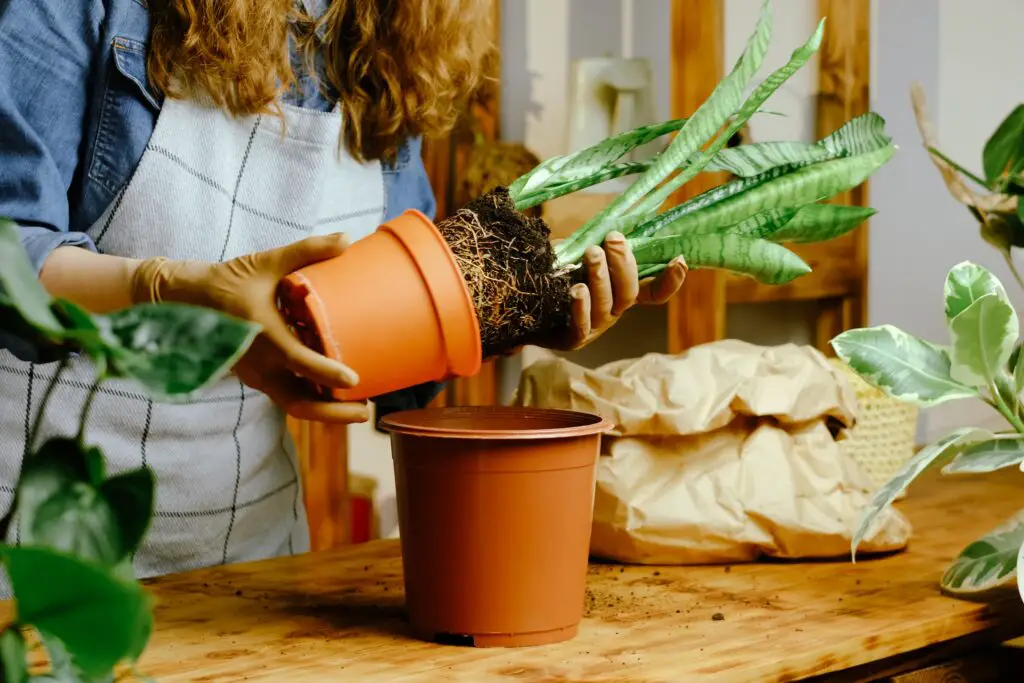
Watering and soil conditions play a crucial role in the health of snake plants. Improper watering and soil conditions can cause the leaves to curl and droop.
Overwatering is a common problem that can lead to root rot and other issues. Snake plants prefer well-draining soil and do not tolerate standing water.
If the soil is kept too moist, the roots may rot, and the leaves may curl and droop. It is essential to ensure that the soil is well-draining and that there are drainage holes in the pot to allow excess water to escape.
On the other hand, if the soil is too dry, the leaves may also curl and droop. Snake plants are drought-tolerant and can go for extended periods without water.
However, it is essential to water them thoroughly when the soil is dry. A good rule of thumb is to water the snake plant once every two to four weeks, depending on the environmental conditions and the size of the pot.
It is also important to use the right watering technique. Pouring water directly on the leaves can cause damage and lead to fungal issues. Instead, water the soil directly and avoid getting water on the leaves.
Impact of Light and Temperature
Snake plants are known for their ability to tolerate a wide range of lighting conditions. However, the amount and type of light can still affect their growth and health.
Bright, indirect light is ideal for snake plants, but they can also tolerate low light conditions. However, if the plant is placed in direct sunlight for extended periods, it can cause the leaves to curl and become dry. On the other hand, if the plant is kept in low light conditions for too long, it can lead to slower growth and weaker leaves.
Temperature is another important factor to consider when caring for snake plants. They prefer a temperature range of 55-85°F (13-29°C), which is similar to the typical indoor temperature range.
However, they can still be sensitive to extreme temperatures, especially cold damage. If the plant is exposed to temperatures below 50°F (10°C), it can cause the leaves to droop and turn yellow.
To maintain the health of the snake plant, it is important to keep it in a location with adequate light and temperature. If the plant is exposed to direct sunlight, it is recommended to move it to a location with indirect light. If the plant is exposed to low light, it is recommended to move it to a location with brighter light.
In addition, it is important to protect the plant from extreme temperatures, especially during the winter months. If the temperature drops below 50°F (10°C), it is recommended to move the plant to a warmer location or cover it with a cloth to protect it from the cold.
Pests and Diseases Affecting Snake Plants
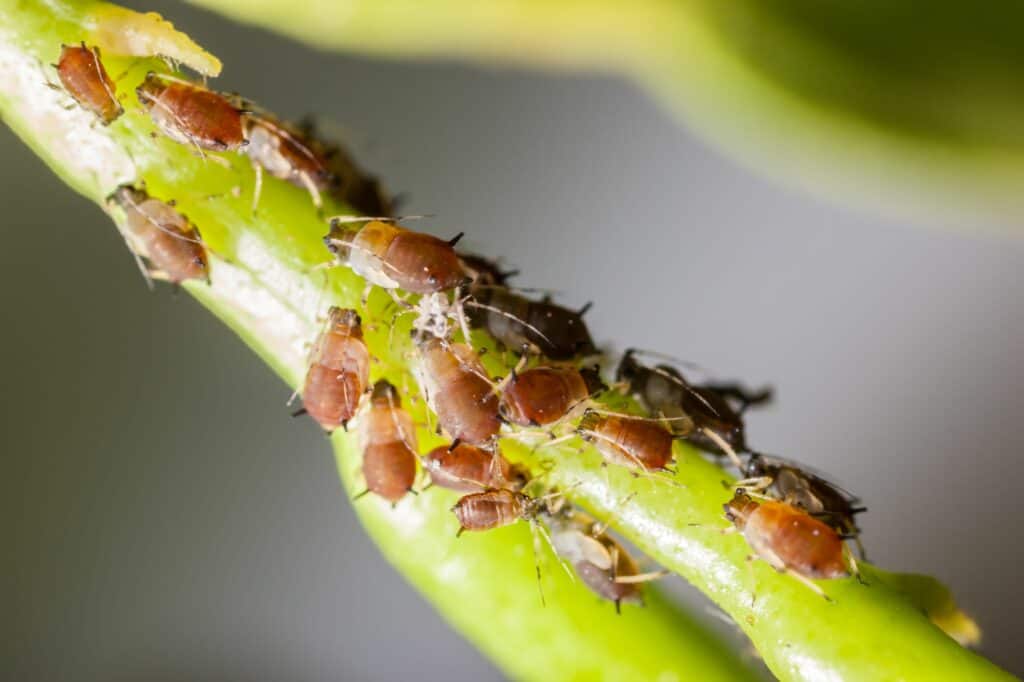
Snake plants are hardy and resilient, but they are still susceptible to pests and diseases that can cause leaves to curl and droop. Common pests that affect snake plants include thrips, mealybugs, and spider mites. These pests can cause damage to the leaves, stems, and roots of the plant, leading to stunted growth and reduced overall health.
Thrips are small, winged insects that feed on the sap of the plant, causing leaves to curl and turn brown. Mealybugs are white, waxy insects that can be found on the leaves and stems of the plant.
They feed on the sap of the plant and can cause leaves to curl and droop. Spider mites are tiny, spider-like insects that can be found on the underside of leaves. They feed on the sap of the plant and can cause leaves to curl and turn yellow.
In addition to pests, snake plants can also be affected by fungal infections such as red leaf spot and southern blight. Red leaf spot is a fungal infection that causes circular red spots to appear on the leaves of the plant. Southern blight is a fungal infection that causes the stem of the plant to rot and can lead to the death of the entire plant.
To prevent pest and disease infestations, it is important to keep your snake plant healthy and well-maintained. This includes providing the plant with the proper amount of water and sunlight, as well as regularly inspecting the plant for signs of damage or infestation.
If you do notice signs of pests or disease, it is important to take action quickly to prevent further damage to the plant.
Treatment for pests and diseases can vary depending on the type and severity of the infestation. In some cases, simply removing the affected leaves or stems may be enough to prevent further damage. In more severe cases, chemical treatments or natural remedies such as neem oil or insecticidal soap may be necessary to eliminate the infestation.
Nutrition and Fertilizer Needs

Snake plants are relatively low-maintenance and do not require frequent fertilization. However, providing the plant with the right nutrients can help prevent the leaves from curling or drooping.
Snake plants prefer well-draining soil, and overwatering can lead to root rot, which can cause the leaves to curl or droop. Therefore, it is crucial to ensure that the soil is moist but not waterlogged. The plant should be watered only when the top inch of soil is dry.
When it comes to fertilizer, snake plants do not need much. A balanced, water-soluble fertilizer can be applied once every two to three months during the growing season.
However, over-fertilizing can damage the plant and cause the leaves to curl or droop. Therefore, it is essential to follow the manufacturer’s instructions carefully and avoid applying too much fertilizer.
In terms of nutrients, snake plants require nitrogen, phosphorus, and potassium. Nitrogen is essential for leaf growth, while phosphorus promotes root development and flower growth. Potassium helps the plant to resist diseases and stress.
If the leaves of the snake plant are curling or drooping, it may be a sign of nutrient deficiency. In this case, a fertilizer that is rich in nitrogen can be applied to the soil. Alternatively, a slow-release fertilizer can be added to the soil during repotting.
Snake plants also benefit from good air circulation, which can help prevent fungal diseases that can cause the leaves to curl or droop. Therefore, it is important to place the plant in a well-ventilated area away from drafts and stagnant air.
Repotting and Potting Mix Considerations
When a snake plant’s leaves are curling or drooping, it may be a sign that it needs to be repotted. Repotting a snake plant involves transferring it to a larger pot with fresh potting mix. This can help rejuvenate the plant and promote healthy growth.
When selecting a new pot for a snake plant, it’s important to choose a container that is slightly larger than the current one.
A pot that is too large can lead to overwatering and root rot, while a pot that is too small can cause the plant to become rootbound. A good rule of thumb is to choose a pot that is one to two inches larger in diameter than the current pot.
When it comes to potting mix, snake plants prefer a well-draining soil that is rich in nutrients. A good potting mix for snake plants should include a combination of peat moss, perlite, and sand. This helps to ensure that the soil is well-aerated and drains properly.
When repotting a snake plant, it’s important to gently remove the plant from its current pot and carefully loosen any tangled roots. The plant should then be placed in the new pot and covered with fresh potting mix. The soil should be gently packed down around the plant to ensure that it is stable.
Signs and Symptoms of Unhealthy Snake Plant
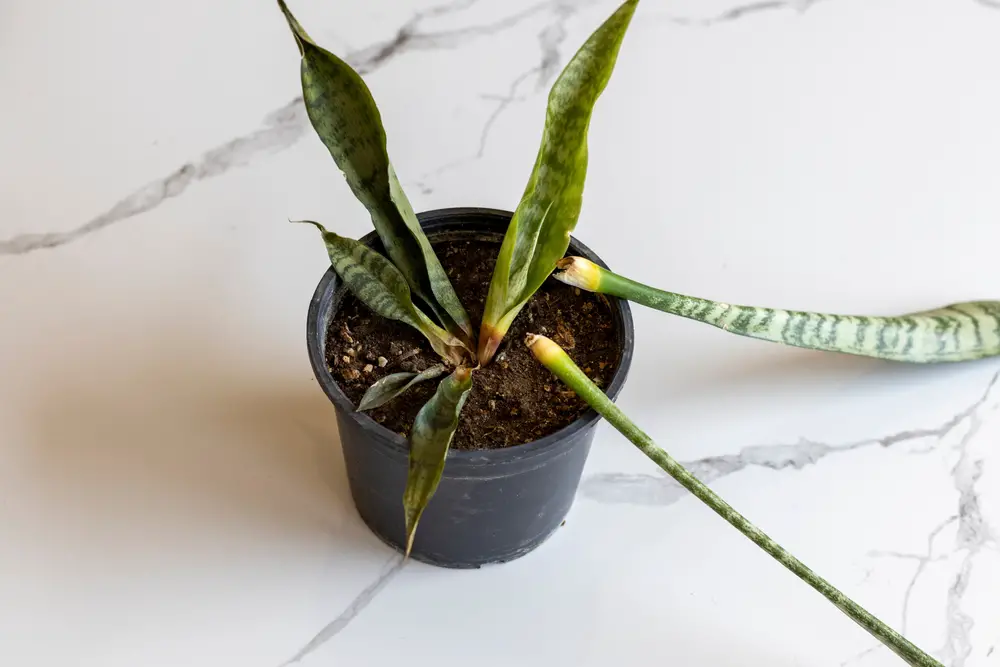
Snake plants are known for their hardiness and ability to thrive in a variety of conditions. However, like any plant, they can still experience issues that cause the leaves to curl and droop. Here are some signs and symptoms of an unhealthy snake plant:
- Curling leaves: If the leaves of your snake plant are curling inward or outward, it could be a sign of several issues. Overwatering, underwatering, or a lack of humidity are common causes of curling leaves in snake plants. Additionally, if the roots are overcrowded in the pot, it can cause the leaves to curl.
- Wilted or floppy leaves: If the leaves of your snake plant are wilted or floppy, it is likely due to overwatering. Snake plants prefer to dry out between watering, so if they are consistently moist, it can lead to root rot and wilted leaves.
- Infected or damaged leaves: If your snake plant has yellowing leaves, brown edges, or appears to be soft and mushy, it could be a sign of infection or damage. Inspect the leaves and stem for any signs of pests or damage, and remove any affected leaves to prevent the issue from spreading.
- Yellowing leaves: If the leaves of your snake plant are turning yellow, it could be a sign of several issues. Overwatering, underwatering, or exposure to direct sunlight can cause the leaves to yellow. Additionally, if the roots are overcrowded in the pot, it can cause the leaves to yellow.
If you notice any of these signs or symptoms in your snake plant, it is important to take action quickly to prevent further damage. Check the soil moisture level and adjust watering accordingly, and ensure that the plant is not in direct sunlight.
If the roots are overcrowded, repot the plant into a larger container. By taking these steps, you can help your snake plant recover and thrive.
Preventive Measures and Solutions
To prevent snake plant leaves from curling and drooping, it is important to provide the plant with the proper care. Sansevieria, also known as snake plant, is a succulent that is drought-tolerant and prefers well-draining soil. Overwatering can lead to root rot, which can cause the leaves to droop and curl. Therefore, it is recommended to let the soil dry out between waterings.
Snake plants prefer bright, indirect light but can also tolerate low light conditions. However, too much direct sunlight can cause the leaves to burn and curl. It is best to place the plant in a location where it can receive bright, indirect light for several hours each day.
In addition to proper watering and lighting, it is important to ensure that the plant roots have enough room to grow. If the plant becomes root-bound, it can cause the leaves to curl and droop. To prevent this, it is recommended to repot the plant every 2-3 years into a larger container with fresh soil.
Pruning can also help prevent leaf curling and drooping. Removing any damaged or yellowing leaves can help the plant focus its energy on healthy growth. Propagation can also be done through leaf cuttings, which can help rejuvenate an older plant.
To summarize, preventing snake plant leaves from curling and drooping involves providing the plant with the proper care, including well-draining soil, proper watering, bright but indirect light, adequate space for root growth, and occasional pruning. With these measures, the plant can thrive and produce healthy, vibrant leaves.
Additional Information
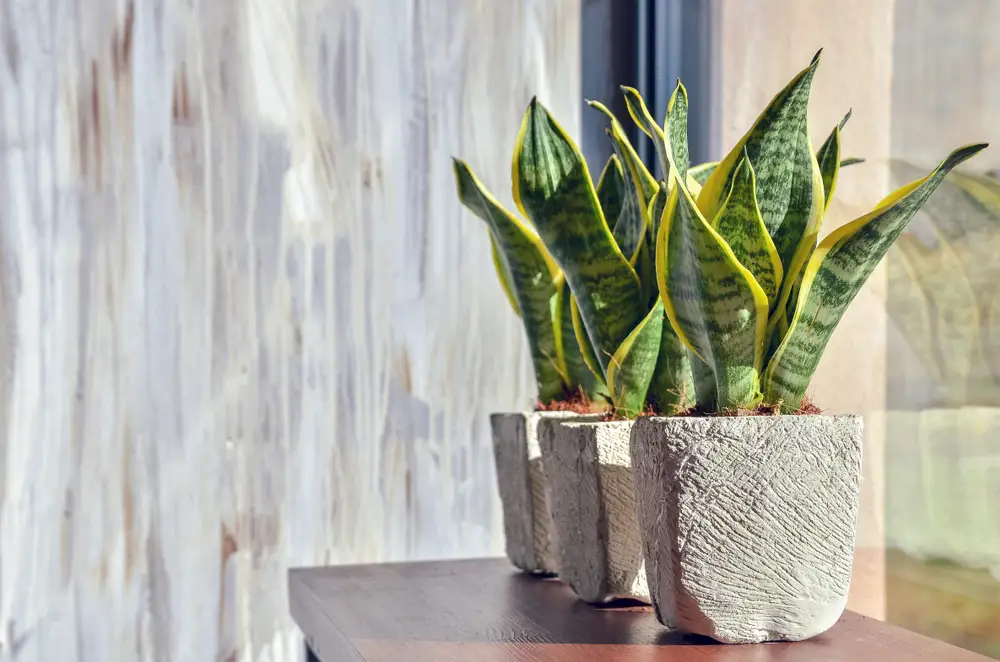
Snake plants are resilient houseplants that can tolerate a wide range of growing conditions. However, sometimes they can develop problems such as curling or drooping leaves. In this section, we will provide additional information that can help you identify and resolve these issues.
Overwatering is one of the most common causes of snake plant leaves curling and drooping. When the soil is too wet, the roots can rot, and the plant can’t absorb water properly.
To avoid overwatering, make sure the soil is completely dry before watering again. Also, ensure that the pot has proper drainage holes to prevent water from accumulating at the bottom.
Root rot is another issue that can cause snake plant leaves to curl and droop. This happens when the roots are constantly exposed to excess moisture. To prevent root rot, it’s essential to use well-draining soil and avoid overwatering. If you suspect that your plant has root rot, you can try treating it with hydrogen peroxide or neem oil.
Dehydration is also a common cause of snake plant leaves curling. When the plant doesn’t receive enough water, it can’t maintain turgor pressure, which causes the leaves to curl and droop. To prevent dehydration, make sure to water your plant regularly, especially during the summer months when it’s hot and dry.
During the winter months, snake plants can also experience foliage problems due to the dry air. To prevent this, you can increase the humidity around the plant by placing a tray of water near it or using a humidifier.
Fungal infections can also cause snake plant leaves to curl and droop. To prevent fungal infections, make sure to keep the foliage dry and avoid getting water on the leaves. You can also use a fungicide to treat infected plants.
Frequently Asked Questions
How do you fix a droopy snake plant?
A droopy snake plant can be fixed by checking the soil moisture level and adjusting the watering frequency accordingly. Overwatering can lead to root rot, which causes the plant to droop.
If the soil is waterlogged, repotting the plant in fresh, well-draining soil can help. It is also important to ensure that the pot has adequate drainage holes to prevent water from accumulating at the bottom.
How do I stop my snake plant leaves from curling?
Curling snake plant leaves can be caused by several factors, including overwatering, underwatering, inadequate soil and drainage, pests, and disease. To stop the leaves from curling, it is important to identify the underlying cause and address it.
For example, if the soil is too dry, watering the plant more frequently can help. If the plant is infested with pests, using an insecticide can help get rid of them.
What does overwatering a snake plant look like?
Overwatering a snake plant can lead to root rot, which causes the leaves to turn yellow and droop. The soil may also have a foul smell and appear waterlogged.
In severe cases, the roots may start to rot and turn black. To prevent overwatering, it is important to allow the soil to dry out between watering and ensure that the pot has adequate drainage holes.
Why are my snake plant leaves skinny?
Skinny snake plant leaves can be caused by inadequate light, overwatering, or nutrient deficiencies. Snake plants require bright, indirect light to grow properly. If the plant is not getting enough light, the leaves may become skinny and weak.
Overwatering can also cause the leaves to become skinny and yellow. Nutrient deficiencies, such as a lack of nitrogen or potassium, can also cause the leaves to become skinny and weak.
Will snake plant leaves uncurl?
Snake plant leaves may uncurl if the underlying cause of the curling is addressed. For example, if the leaves are curling due to overwatering, allowing the soil to dry out between watering and ensuring adequate drainage can help the leaves uncurl.
However, if the leaves are severely damaged or diseased, they may not uncurl and may need to be removed.
Why are my snake plant leaves curling inward?
Inward curling snake plant leaves can be caused by several factors, including pests, disease, inadequate light, or overwatering. Pests such as spider mites or thrips can cause the leaves to curl inward.
Disease, such as fungal infections, can also cause the leaves to curl. Inadequate light or overwatering can also cause the leaves to curl inward. Identifying the underlying cause and addressing it can help prevent further damage to the plant.

Hey, I’m Lisa and I’ve been an avid gardener for over 30 years. I love writing, talking and living in the garden! Feel free to connect with me on my socials below

